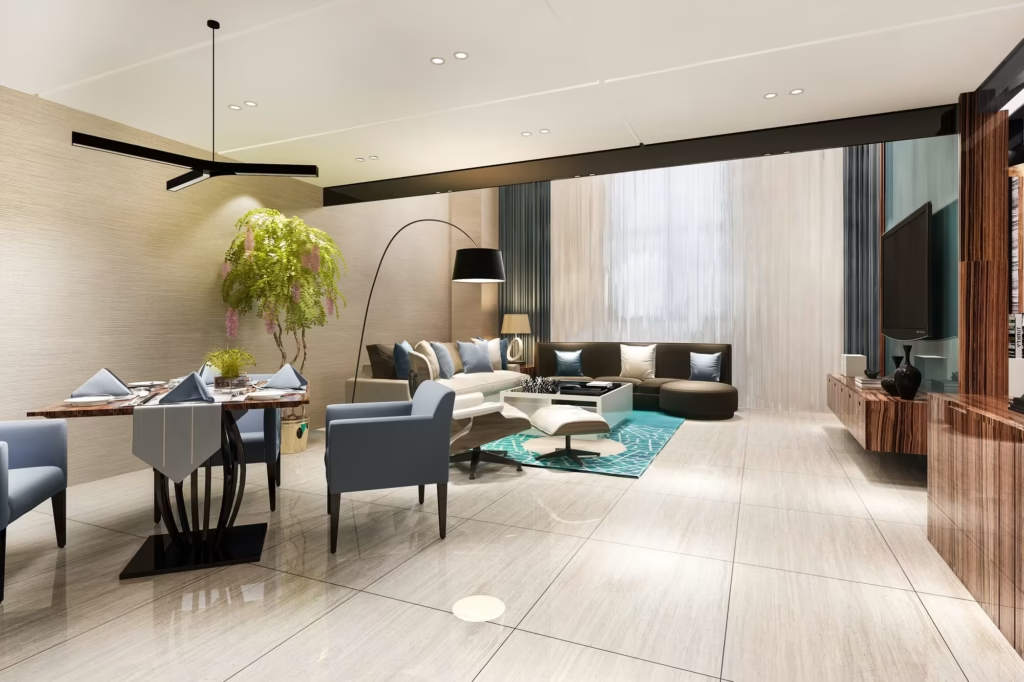At first glance, interior design might seem like a one-size-fits-all solution — but designing a luxury home and outfitting a corporate office require completely different strategies. While both aim to enhance functionality and aesthetics, residential and commercial design vary greatly in terms of purpose, materials, and user behavior.
1. Purpose & Experience
Residential design focuses on comfort, personality, and private living. It’s about creating a sanctuary that reflects the homeowner’s lifestyle.[Text Wrapping Break]Commercial design, on the other hand, prioritizes brand image, customer engagement, and employee productivity. Each square foot must be optimized for business goals.
2. User Interaction
Homes are designed for a select few; commercial spaces cater to many — customers, staff, visitors. This affects flow, accessibility, safety regulations, and material durability.
3. Design Standards & Compliance
Commercial projects require adherence to building codes, fire safety norms, and accessibility standards (e.g., ADA compliance). Residential spaces have more creative freedom but fewer formal requirements.
4. Aesthetic Considerations
In residential design, emotional connection is key — color schemes, artwork, and furniture often reflect the resident’s personality.[Text Wrapping Break]In commercial design, the brand identity drives the aesthetic — logos, color palettes, and messaging are integrated into the interior to reinforce recognition and trust.
5. Budget & Timeline
Commercial projects typically involve tighter deadlines and larger budgets. They also require collaboration with contractors, consultants, and multiple stakeholders. Residential projects tend to have a more personal pace and budget flexibility.
Conclusion: Whether it’s a home or a business, successful design begins with understanding the purpose of the space. Our team brings dedicated expertise in both residential and commercial design, ensuring every project is thoughtfully planned and professionally executed.

